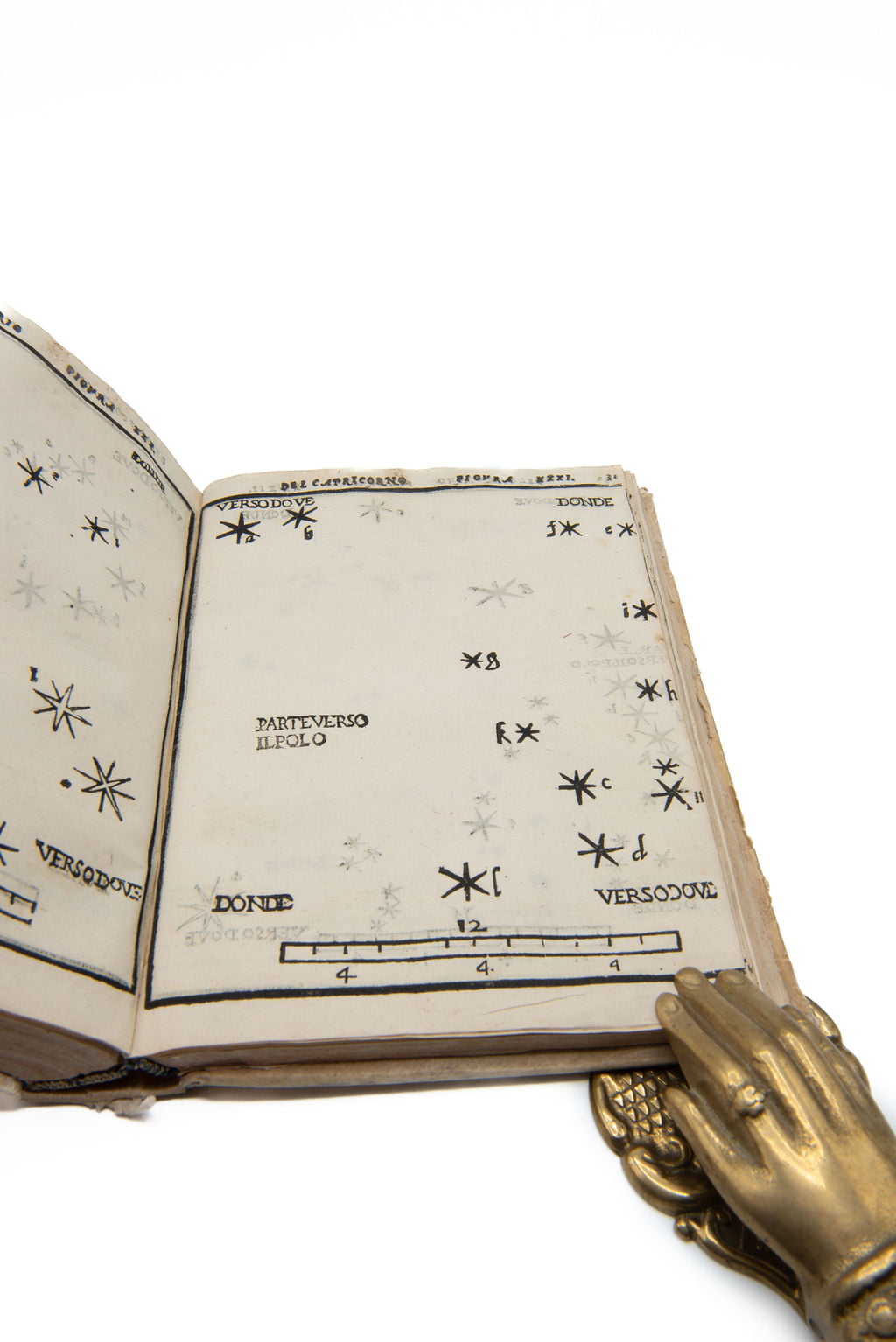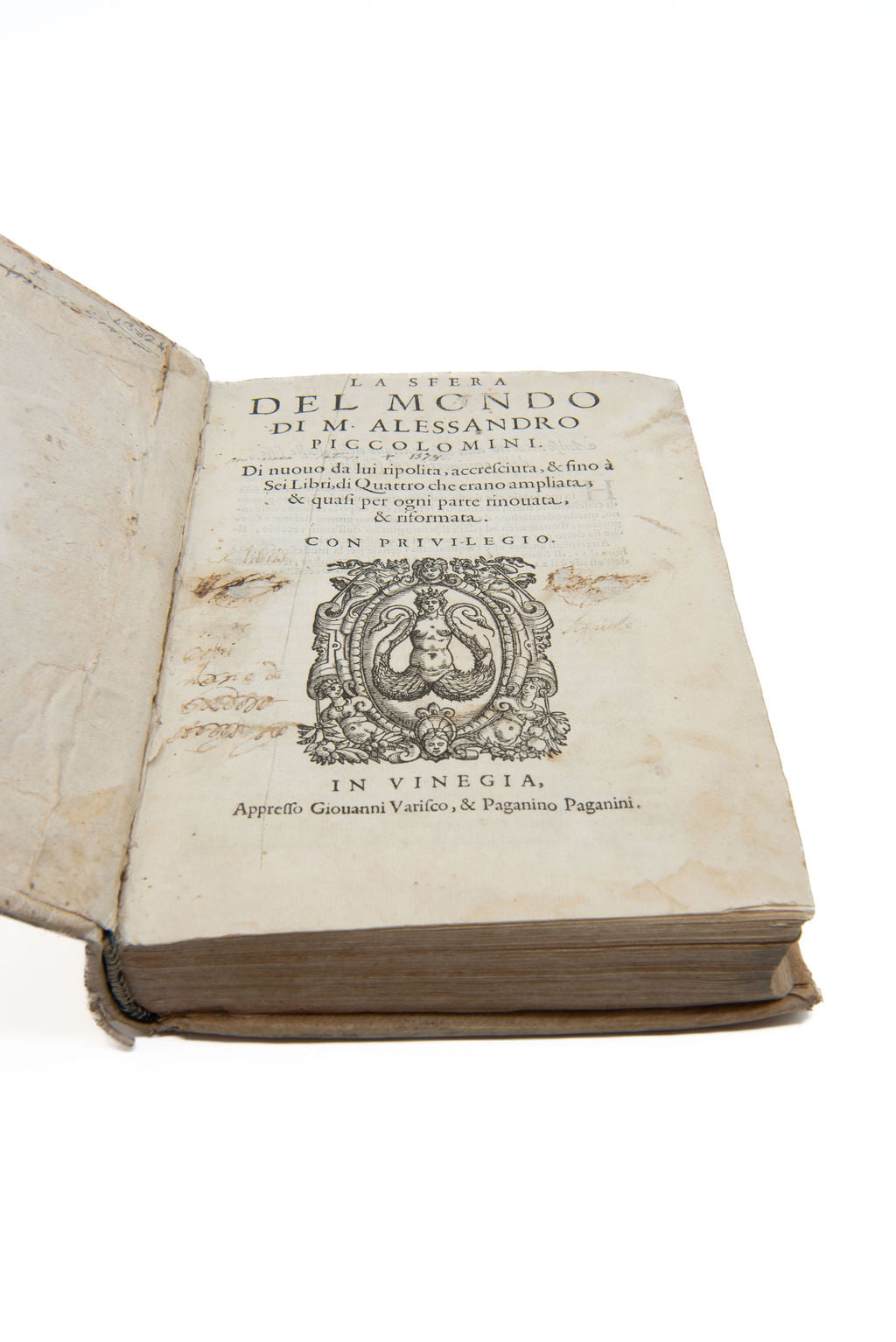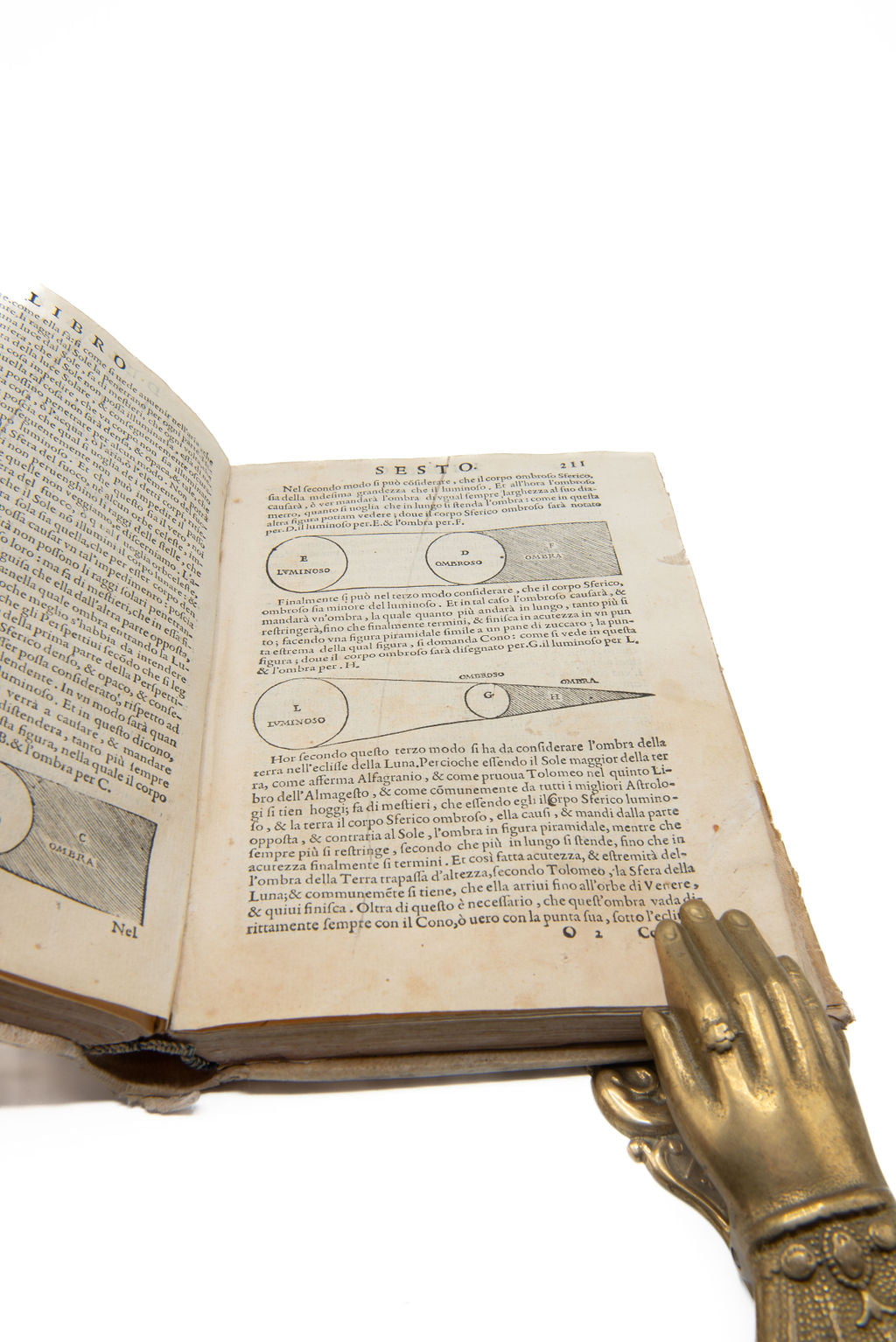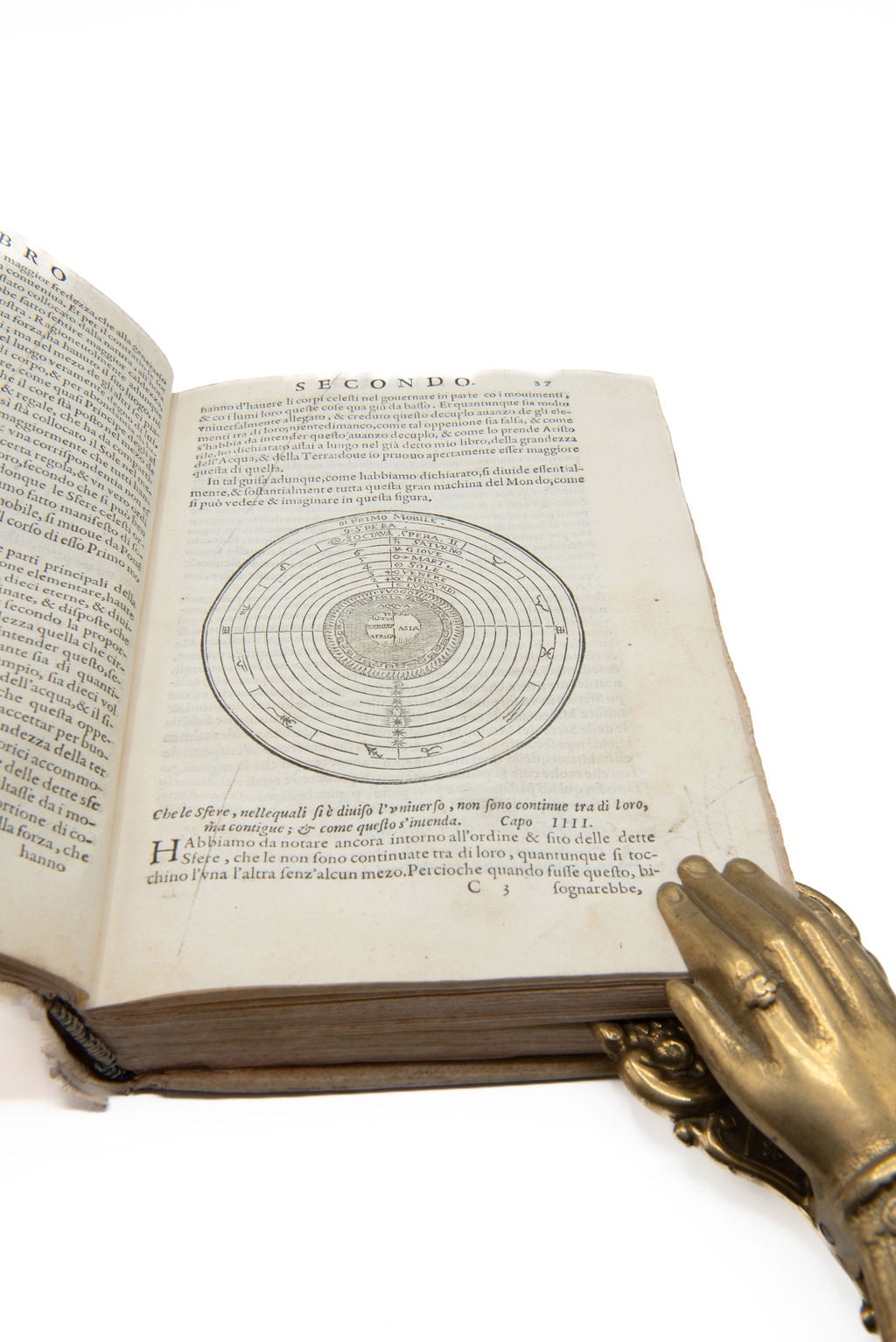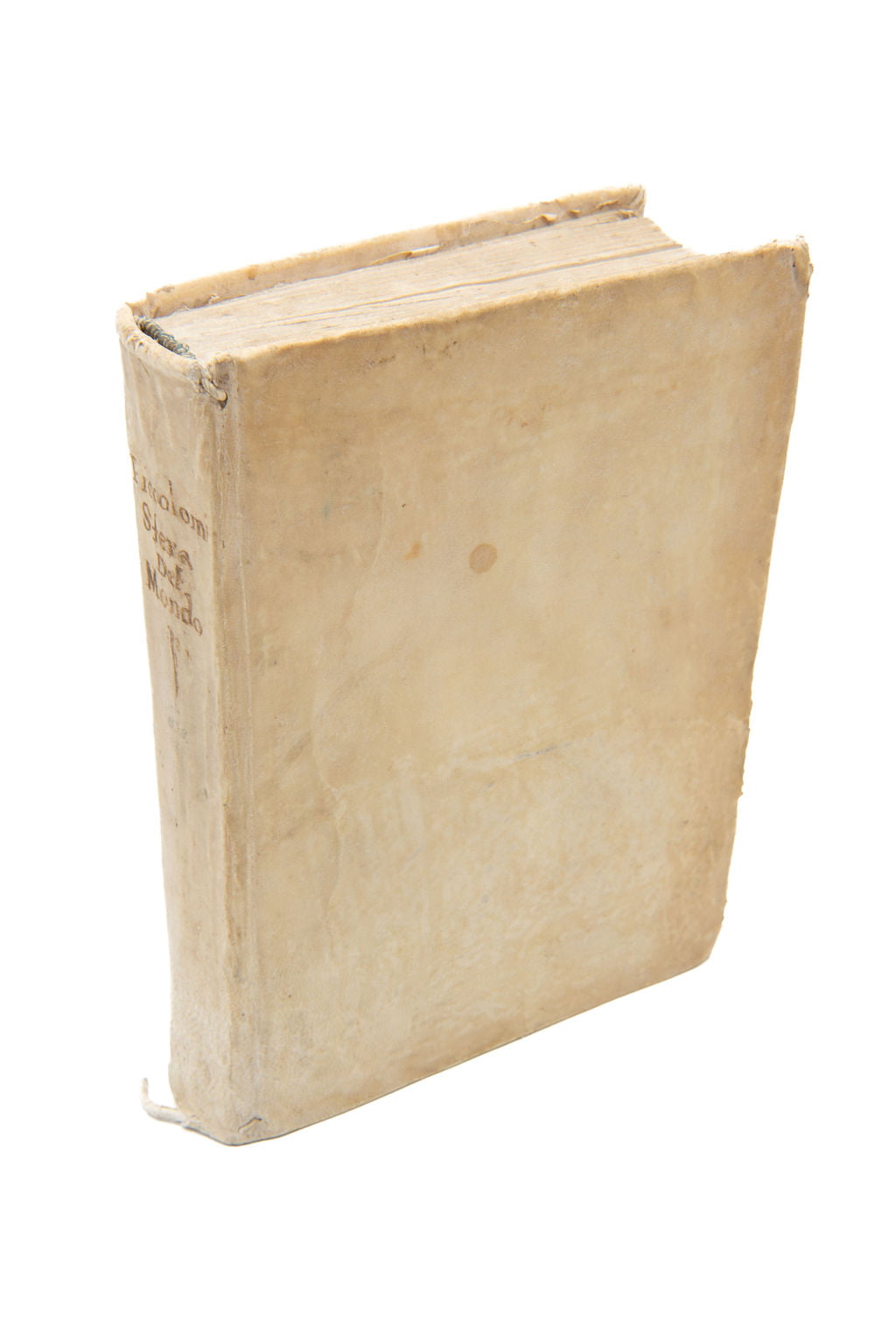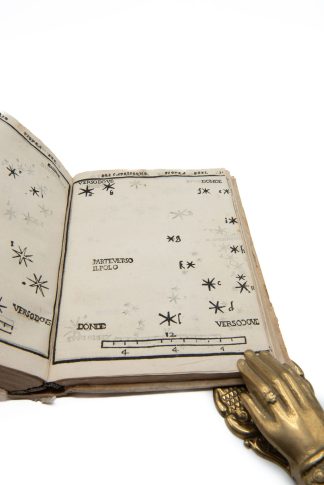PICCOLOMINI, Alessandro.
PREPARING THE NEXT EDITION?
La sfera del mondo [with] De le stelle fisse
Venice, Giovanni Varisco e Paganino Paganini, [n.d., c. 1566]£2,250.00
4to, 2 works in one, 1) pp. (xii) 252; 2) ff. 1-32; pp. 1-48; ff. 25-93 (iii). Roman and italic letter, woodcut floriated initials, headpiece, printer’s device to t-ps. Astronomical and geometric diagrams in first work, 48 full-page plates containing astronomical maps and 43 astronomical tables in second, ¾ woodcut of an astrolabe in both. First t-p a little bit soiled, ink ex libris partly erased causing small holes in blank, occasional age yellowing, light browning one gathering, old ink marks to margins (many rubbed or removed), text often lightly ruled through (not maps or diagrams), outer edges of a few astronomical plates slightly trimmed (affecting 3 letters on one leaf), rear feps adhered, further annotations visible. A particular copy with much interesting early use in slightly later vellum. Later “Arcivescovo di Patrasso † 1578’ to t-p, cancelled later ms. numeric annotations (possibly a computus, i.e. calculation of a date) to front paste-down.
This very influential Italian cosmography paired with the first printed star atlas of the Western world, were originally published together in 1540. The present editions, printed with no date, bear a dedication of 1564 and were possibly produced around 1566 (see Cantamessa N. 6105) or slightly later (see EDIT16 CNCE41110 and CNCE41174), but certaintly before 1588, when Varisco ceased his printing activity.
The frequent marginalia indicate that an early reader examined this copy very carefully, also marking almost all the pages with a diagonal line through the text as he read through it, and all chapter headings with a cross-hatched symbol. Occasional notes to margins – particularly in sections concerned with constellations, and their associated mythological characters and zodiacal signs – include astrological symbols, the words ‘bene’ (=good) and ‘buono per la Magi’ (=good for ‘Magi’, possibly ‘Magia’, meaning magic). It appears that the annotator was checking the contents with considerable care and vigorously marking the pages accordingly. It is possible that he was a censor or inquisitor checking the astrological contents for orthodoxy. The result must have been favourable as these works by Piccolomini were never included in the Index Librorum Prohibitorum. However, evidence from other volumes of the period suggest that the diagonal crossing through of pages of text accompanied by marginal sign markings was not infrequently done by printers in the course of publication of a new edition or text in order to ensure that nothing was duplicated or omitted and that everything appeared in the right place.
The scion of a papal family in Siena, Alessandro Piccolomini (1508-1578) was a leading humanist, philosopher, dramatist and astronomer. A member of the prominent literary society ‘Accademia degli Intronati’ in Siena, he contributed to the founding of the new ‘Accademia degli Infiammati’ at Padua. After teaching philosophy in Padua, he moved to Rome and Siena and started an ecclesiastical career, which eventually led him to being appointed archbishop of Patras in 1574 – however, he never went to Greece. A partisan of the Italian vernacular, he intentionally avoided Latin in his numerous works. These comprise a couple of moral comedies and collections of his letters and sonnets, several philosophical treatises and translations of classical authors, as well as astronomical essays.
‘La sfera del Mondo’ is an astronomical treatise concerned with the Ptolemaic-Aristotelian universe. After introducing a few elementary principles of geometry, Piccolomini describes the celestial spheres and their motion, discusses equinoxes, solstices and the horizon, presents the zodiac signs, the tropics, the difference between ‘natural’ and ‘artificial’ days, explains how stars rise and set, as well as the solar and lunar eclipses. Interestingly, a few sections are dedicated to showing how to make an ‘instromento’ (an instrument, i.e. the astrolabe) used to determine the altitude of “the sun, the moon, or any desired star’ above the horizon.
‘De le stelle fisse’ is Piccolomini’s best-known and successful astronomical work, written for a popular audience. It was dedicated to the noblewoman Laudomia Forteguerri, and designed so that she, as well as any other reader who was not an astronomer, could recognise and find the constellations in the sky. “Piccolomini produced 47 star maps for the book, one for each of the Ptolemaic constellations exept for Equuleus, which he considered too insignificant for inclusion. Unlike previous depictions of the constellations, he did not draw in the mythological images associated with them, and so they appear as simple star patterns. […] The accompanying text helps to explain the particulars about each constellation […] In the individual maps, the constellations are drawn to fill the page and, therefore, the different maps are not to the same scale”. (Brashear) The magnitude of the stars is reproduced using different symbols, and Piccolomini introduced here the practice of identification of stars by Latin letters, which would be adopted using the Greek alphabet by Johann Bayer some seventy years later. The volume also comprehends several astronomical tables. The last three pages are concerned with the rising and setting of the main stars in the twelve zodiac signs.
USTC 848368 and 848376; Cantamessa N. 6105 (both eds); Houzeau-Lancaster, 2491 (both eds). This eds. not in BM STC It., Shirley, Brunet or Graesse. R. Brashear, ‘Piccolomini, Alessandro’, in The Biographical Encyclopedia of Astronomers (2007).

